Medical expert of the article
New publications
How to choose a good pedicure polish?
Last reviewed: 06.07.2025

All iLive content is medically reviewed or fact checked to ensure as much factual accuracy as possible.
We have strict sourcing guidelines and only link to reputable media sites, academic research institutions and, whenever possible, medically peer reviewed studies. Note that the numbers in parentheses ([1], [2], etc.) are clickable links to these studies.
If you feel that any of our content is inaccurate, out-of-date, or otherwise questionable, please select it and press Ctrl + Enter.
When performing a pedicure, different types of varnishes are used. They can be harmful and toxic, or they can be organic, free of toxins, destroying nails. Which pedicure varnish to choose and how to navigate the types of varnish?
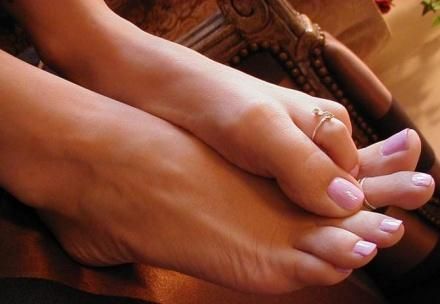
Dry nail polish
Dry nail polish is a film applied to the surface of the nail instead of traditional liquid polish. Since the nail polish is dry based, there is no risk of damaging the pedicure. After applying dry nail polish, the pedicure is extremely durable, lasting about a week at least. Beautiful colors, graphic prints can be made with dry pedicure polish. Prints can even be with images and be a decoration for the design of toenails and fingers.
 [ 1 ]
[ 1 ]
How to apply dry pedicure polish?
The technology for performing a pedicure is very simple and accessible to every woman. You need to open a package of nail strips and choose the right size of the varnish strip for each nail. Peel the protective film off the strip and place it on a clean, dry surface of the nails. Repeat this procedure for each nail, and you will not have to wait for the nails to dry.
The final look of a dry pedicure is similar to a traditional liquid polish application.
Peculiarities
Strips of dry nail polish can be cut with sharp scissors. The more the strip matches the size of the nail, the longer the pedicure will last. Strips of dry nail polish along the top edge of each nail will help prevent chipping and fading. For best results, nails should be clean, dry, and free of old polish. Push back cuticles with an orange stick rather than cutting them off, this will increase the surface area of the nail and extend the life of the pedicure.
Dry nail polish stripes are usually very durable. This type of pedicure can be so durable that it may take some time to remove. This may require additional soaking of the nail rollers in nail polish remover to completely eliminate the stripes.
Acrylic nail polish
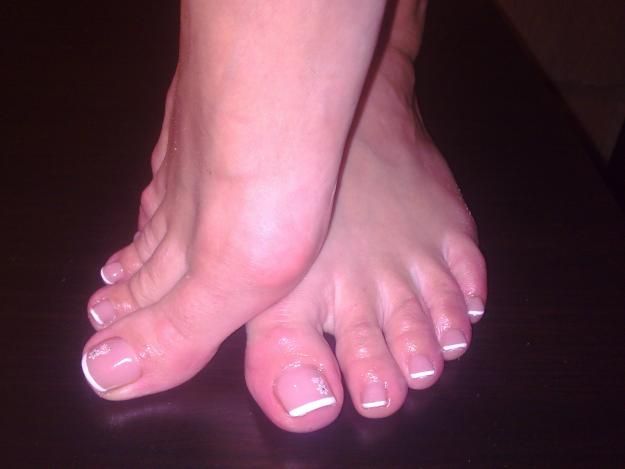
Environmentalists in the cosmetics industry have repeatedly expressed concern: some studies claim that water-based acrylic varnish is safer than enamel. Enamel nail polish is classified as a hazardous substance when used for pedicures. Water-based acrylic varnish has been advertised as a safer type of paint, which is non-flammable and can be considered more environmentally friendly.
It is best to visit a beauty salon or a store that offers a wide range of polishes to evaluate all the available colors. Samples of acrylic nail polish for a pedicure can be selected depending on the skin tone, the season, your own preferences. Some acrylic polishes have additional features added, such as glitter and a crackle effect, which gives the nails the appearance of crushed ice.
Peculiarities
Sometimes false nails are used during a pedicure. This may be necessary if a person's toenails are irregularly shaped or damaged. In this case, the pedicure specialist may use acrylic powder.
Acrylic powder is a polymer powder that is used to create false nails. It is used in combination with a monomer liquid that hardens to form an acrylic resin. The main ingredient in acrylic powder is a combination of 70 percent ethyl methacrylate and 30 percent methyl methacrylate. The combination of these substances creates a resin that is flexible and strong, just like natural nails. Without the use of acrylic powder, artificial nails in a pedicure would simply be pieces of plastic that are glued onto your nails.
 [ 2 ]
[ 2 ]
Reactions
A chemical reaction called crosslinking occurs when acrylic powder is mixed with liquid monomer. This reaction causes long chains of polymer strands to form into a shape that quickly hardens and resembles a natural nail. Dyes and pigments are added to change the appearance of the resin. One example is benzoyl peroxide, which is added to the powder to create a white color.
Acrylic powders in a variety of shades and colors contain metallic pigments that beautifully add sparkle and depth to your French manicure or chosen nail design.
Powders with a high content of coloring pigment for pedicure do not turn yellow and do not fade for a long time.
Pedicure masters also use a special powder, which is made in the form of powder, in Japanese technology to strengthen nails. This powder is carefully applied to the toenail during a pedicure after the mineral paste has been applied - it protects the toenails from damage and actively promotes their growth.
Gel nail polish
Gel pedicures are sometimes preferred over acrylic nails because gel nails are odorless. Gel nails are not made of the same acid as acrylic nails, and they look healthier and more natural. In addition, gel pedicures look more natural, and gel nails are more flexible, similar to natural nails. These nails are shiny and last longer than acrylic nails. During a gel pedicure, the gel is treated with ultraviolet rays. The gel is durable and easily adheres to the nails. The nails underneath are not damaged, but healed. The downside of a gel pedicure is that it costs more than an acrylic pedicure.
Natural nails continue to grow under the gel, a gel pedicure can improve their health. The gel acts as a shield against anything that can weaken or damage the nails, such as moisture or dishwashing liquid, which we use every day. After this type of pedicure, natural nails are stronger and more durable.
Gel nails usually have clear colors. However, tanning can lead to slight yellowing of the nails. Gel gives the nails a soft white color. But it can also be painted, the pedicure will look brighter and last longer.
Peculiarities
Gel nail polish is a special lacquer formula that is applied with the use of ultraviolet light. Proponents of gel nail polish claim that the gel lasts for at least two weeks without damage, making it much more practical than regular traditional pedicures. Likewise, gels are considered gentler than other types of polish, such as acrylics, and help keep natural nails strong and healthy.
A professional pedicure specialist usually recommends using gel nails for several reasons. Firstly, special gels are only available for purchase in salons or specialized stores, which ensures their quality when performing a pedicure. Secondly, each layer of gel must be done under an ultraviolet lamp to ensure the quality of the pedicure and manicure, this adds hardness and strength to it. Caring for nails with gel is much less complicated than caring for nails with acrylic.
It is better to entrust the removal of the gel to a professional in a salon.
Cons
Despite all the benefits, there are some negative aspects to gel nails. This procedure is less common than a more traditional pedicure, as not all salons are able to offer gel polishes. The initial cost for a gel pedicure is higher than for a traditional pedicure, and there is another cost to remove the gel.
Pros
Many women find that gel nails are much more convenient than traditional pedicures when performing a pedicure. You get well-groomed nails for several weeks without any worries.
Organic nail polish
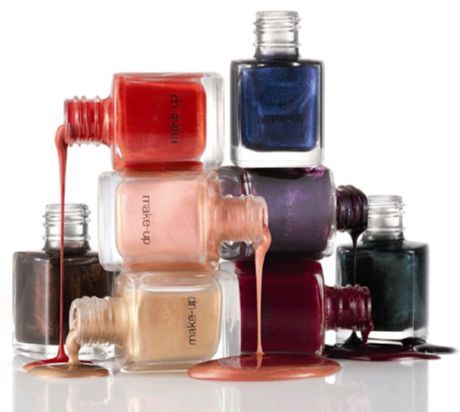
An organic pedicure is a way of caring for your nails without using any chemicals that may be harmful to your health or the environment. Some chemicals in nail polishes may contain agents that cause damage to your nails or even cancer and other diseases. Since many nail care products contain chemicals, you should look for the words "organic polish," "eco-polish," or "green manicure" on the polish label when trying to find a professional manicure and pedicure product.
Common substances found inside regular nail polish include formaldehyde, dibutyl phthalate, and toluene. These elements are harmful to the environment and to the human body. They can enter the body through the nails or skin of the nail bed when performing a pedicure and cause damage over time. Some of these ingredients are banned in many countries.
In the salon
When visiting a nail salon, you should ask about the types of nail polishes used in the salon. Even cuticle moisturizers should be made from natural ingredients to complement organic polishes. Green manicures and pedicures can be found in salons all over the world, and they usually advertise organic nail products. The cost of a non-toxic pedicure is slightly higher than a traditional pedicure.
Peculiarities
An organic pedicure usually starts with a nail treatment. The cuticle softener should be made from natural ingredients, such as hot water and buttermilk. Natural oils, such as olive oil and coconut oil, can also be used for a pedicure. If the client does not want to use a base coat, a general nail polish with oils applied to the nail plate can make the nails shiny and smooth when performing a pedicure.
After the cuticles have softened, the pedicurist pushes back the cuticles with a special wooden stick and treats them with a cuticle remover. Organic pedicure advocates do not advocate cutting the cuticles, as this can lead to infections. Acrylic, gel or plastic nails are not used in organic manicures and pedicures. The reason is that the glue or chemicals from these false nails can penetrate into the bloodstream. Only natural nails with an organic pedicure can be safe.
Nail care
The use of oil is very important for an organic pedicure. Oil is rubbed into cuticles and nails during a pedicure so that they are nourished with useful substances. Another important note is that you can use mineral oils.
After the nails are filed and cleaned, the pedicurist moisturizes the feet, especially the toes. Oil and honey are often used in pedicures to soften the skin without adding harmful chemicals. Moisturizers that do not contain toxic substances are also used, as a rule, they can also be found in salons.
Water based varnish
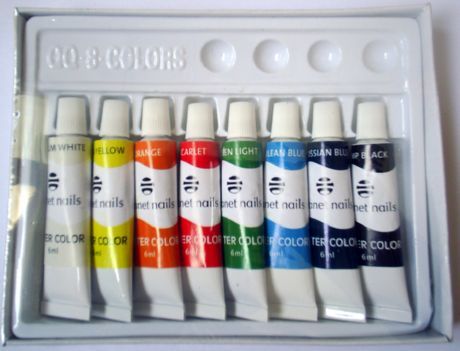
Water-based nail polish is a type of polish that uses water as a base instead of oil or some other type of chemical solvent. This polish is supposed to be safer than regular nail polish, which may contain harmful substances such as formaldehyde and phthalates.
Water-based nail polish may also contain non-toxic dyes that are generally less harmful than those used in most paint kits. This type of nail polish can be purchased at most natural nail supply stores and online. Some types of water-based nail polish may come with a nail polish remover that does not contain harmful additives.
Peculiarities
This type of nail polish may be much safer for a person to use when performing a pedicure, but some people find that it does not last as well as other types of nail polish. Painting the nails for a pedicure may require several coats to achieve the desired color, which means that one bottle of polish may not last long.
Another possible downside is that most water-based polishes are slow to dry when used for pedicures. They can also be a bit more expensive than other types of polish, but this will largely depend on the brand.
While there are some disadvantages to water-based nail polish, the benefits may outweigh them.
Many people will appreciate the fact that they will not smell a chemical smell when opening a bottle of this polish. In addition, such polishes are safe for children, unlike other types of nail polishes. In most cases, these water-based polishes are non-toxic.
People who are very interested in purchasing all-natural, chemical-free nail polish find that despite all the drawbacks, the lack of chemicals and functionality make it worthwhile to use such nail polish for pedicures. If the water-based nail polish does not come with a branded remover, it can be removed with alcohol.
Professional nail polish
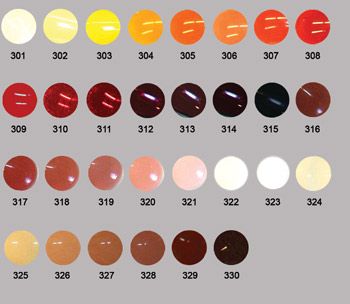
Professional nail polish lasts longer and better than other polishes when performing a pedicure. Cheap nail polishes, as a rule, can lead to chipping and peeling of the coating, unlike professional nail polish. The reason is the lower quality of cheap polishes compared to professional pedicure products. Additives in professional nail polishes allow them not to thicken and harden in the bottle as quickly as regular polishes.
Peculiarities
Professional nail polish applied during a pedicure is more even and with fewer air bubbles, creating a smooth surface. Some nail polishes have special additives that cause the coating to be extra strong, to create a kind of shield for the nails. Other professional polishes may be formulated with a moisturizing effect to protect the nails.
Since professional nail polish usually has high quality ingredients, it is more expensive. Professional nail polish can be purchased at nail salons and cosmetics and perfume stores.
Gel polishes are a fairly popular type of professional nail polish for pedicures. These polishes create a thicker layer of protection than most other polishes.
This type of varnish is usually intended for use in a professional salon, but it can also be used at home - it just takes a little practice.
Colors and strength of varnish
Professional nail polish comes in a variety of colors and is produced by many brands. Choosing the best polishes when doing a pedicure can take some time. It may be a good idea for people to learn some tips from pedicure experts.
Although professional nail polish is designed to last longer than regular polish, proper nail care is still recommended when performing a pedicure to get the best results. This includes applying a base coat before applying the polish. Removing all old nail polish residue and using a primer to remove oils from the surface of the nail are also good ideas. After the polish is applied, the nails should dry for at least an hour. However, there are quick-drying polishes that will not take long to dry.
Non-toxic nail polish
Non-toxic nail polish does not contain any harmful chemicals. Most nail polishes contain dangerous chemicals that do not help protect your nails, but they do provide rich colors. These same polishes may also contain harmful chemicals that have been linked to certain diseases.
Non-toxic nail polish for pedicures can offer the same results with coloring, but the person does not have to worry about being exposed to dangerous chemicals. Non-toxic pedicure polishes can be a safe alternative, especially when used on young children.
Peculiarities
Toluene, a chemical found in many brands of common toxic nail polish, has an overpowering odor similar to paint stripper or turpentine. If ingested, it can cause liver and kidney damage, anemia, or upper respiratory problems. The chemical toluene is also considered a teratogen, meaning its use can cause serious birth defects. If inhaled over a long period of time, it can cause chemical pneumonitis, a condition that is potentially dangerous. Non-toxic nail polish does not contain toluene.
Another common ingredient in many nail polish brands is formaldehyde. This known carcinogen has been linked to certain cancers, such as leukemia. In nail polish for pedicures, it is used as a preservative and also has a very strong odor. In the short term, it can cause symptoms that include skin irritation, nausea, and sore throat. Non-toxic nail polish does not contain formaldehyde.
Dibutyl phthalate phthalate is another potentially dangerous chemical. It can cause damage to the respiratory system. Some cancers are also associated with this chemical, which is not only harmful to humans but can also damage the ecosystem. The use of dibutyl phthalate is banned in many countries around the world. Non-toxic nail polish does not contain phthalate.
Nail polish remover usually contains a substance called acetone. It quickly absorbs into the soil and redistributes into the air and water, and it can cause breathing problems, as well as organ damage and birth defects. Non-toxic nail polish removers for pedicures are able to remove colors without being exposed to these harmful chemicals.

